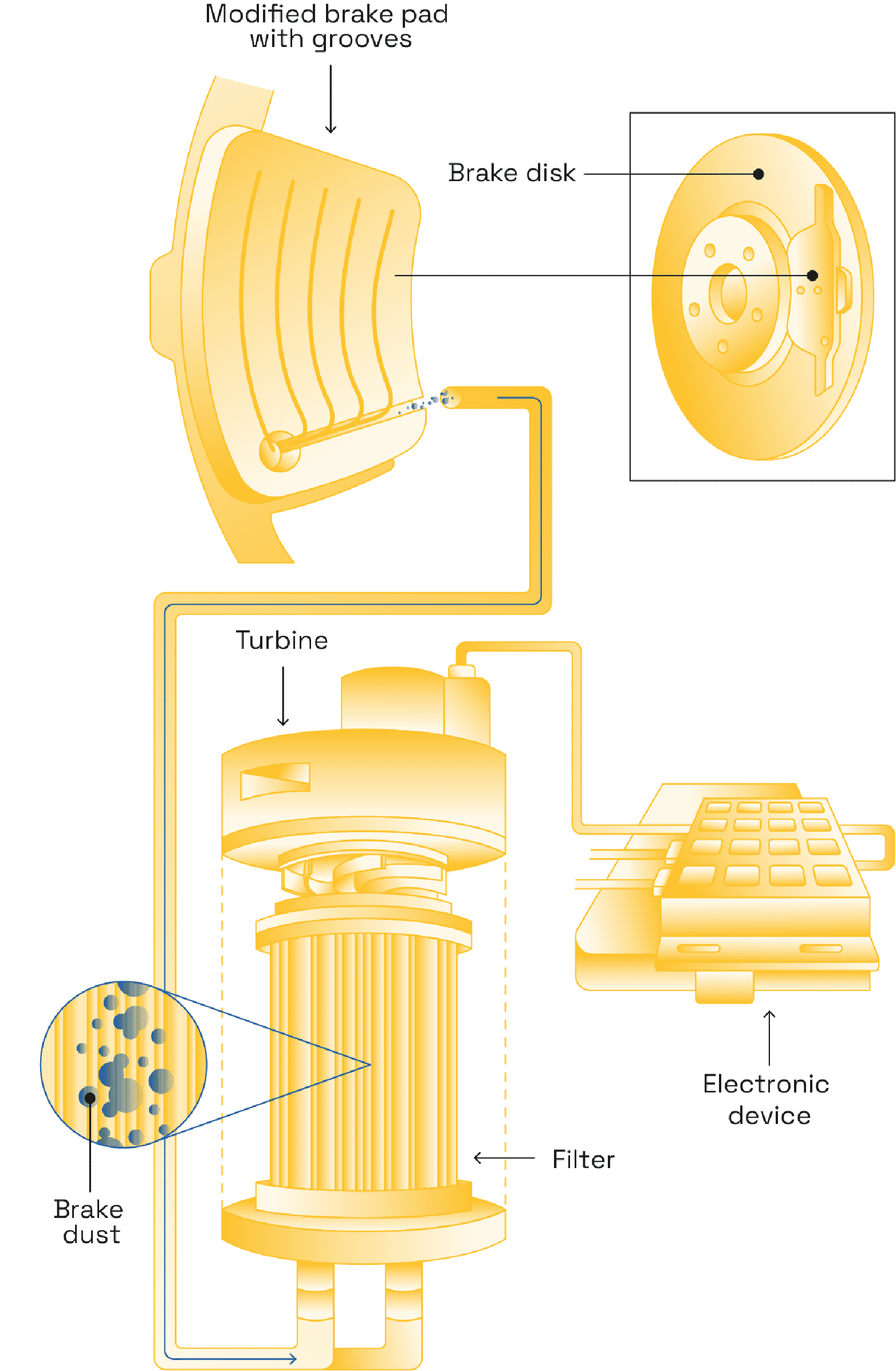FAQ
Answers to your questions about air pollution, particles matter and particles from the braking system.
Fine particles are harmful to human health. They can cause or exacerbate breathing and lung difficulties, cardiovascular diseases and even neurodegenerative diseases. This health risk can be limited if car owners would fit particle filters to their vehicles. Installed on exhaust or braking systems, particle filters are anti-pollution devices which capture fine particles emitted by vehicles. There are two types of particle filters: installations designed to capture particles from exhaust fumes generated by diesel and petrol vehicles, and those designed to recover fine particles from brake wear.
As we inhale 15,000 litres of air every day, we are continually exposed to air pollution, especially in large cities. These gases and fine particles are not only harmful to our health, but they also damage the environment and ecosystems and accelerate climate change. Where does air pollution come from? Although pollutants may be of natural origin: pollens, forest fires, sand mists, soil erosion, and volcanic eruptions generate pollution over which we have very little control, human activity is the main source of air pollution. That is evidenced by the sharp decline in air quality from the 19th century, with the development of industry and road traffic.
Air pollution exposure causes 40,000 deaths each year in France. How? Road transport comes top on the list of pollutant sources, neck and neck with the residential sector (home heating especially). Pollution is generated by vehicle traffic during chemical and physical reactions:
Electric vehicles help fight against global warming and reduce the air pollution that causes 307,000 premature deaths in Europe every year. But electric vehicles are not a miracle solution. They require a lot of energy to produce, charging them may need large amounts of fossil fuels (depending on the source of the electricity used) and – like petrol or diesel cars – they emit fine friction particles.
The term “fine particle” refers to an aggregate of polluting chemical compounds created during combustion, friction or chemical reactions. Forest fires, volcanic eruptions, and desert dust: fine particles can occur naturally. But most fine particles are generated by human activity. How? Mainly from road traffic (exhaust gases and abrasion caused by brakes on tyres and the road), home heating, and industrial and agricultural emissions.
Every year in France, air pollution and fine particles cause 40,000 premature deaths. If we’re going to reduce that impact, we need to understand more about them. But behind the generic term “fine particles” lurks a variety of meanings. Fine particles can take different sizes and shapes, can be made up of different things, and can come from different sources. It’s time to take a closer look.
Stinging eyes, breathlessness, a cough that won’t budge: air pollution – especially when it’s cause by fine particles – is irritating, but can also be the cause of serious diseases. It even puts lives in danger: in France, air pollution cuts life expectancy by two years. And in New Delhi, this figure leaps to 10 years. In terms of deaths on a global scale, air pollution is just as dangerous as smoking, and even more serious than alcohol and unclean water (there are three times as many air pollution-related deaths) and HIV (six times more). Who is most at risk? People suffering from respiratory and cardiac disorders, diabetes, infants, seniors and pregnant women.
One in five deaths around the world is attributable to outdoor air pollution yet politicians are struggling to remedy the situation. In France, the government has even been found at fault by the Court of Justice of the European Union and the French Council of State for not doing enough, while air pollution causes more than 40,000 premature deaths every year. What’s to blame? Natural phenomena certainly contribute (pollen, forest fires, soil erosion, volcanic eruptions, etc.), but most of the damage is caused by human activity (agriculture, industry, transport, construction, etc.), which generates gases and fine particles. In some parts of France transport is the worst culprit, in others, agriculture comes top of the list. In the fight against outdoor air pollution in France, measures must now be taken on domestic heating and road transport, which are respectively responsible for half and a quarter of fine particle emissions in Ile-de-France.
There are 1.4 billion vehicles in circulation on the world’s roads. From the factory to the scrap yard, these vehicles require raw materials to be extracted from the earth, then emit CO2 and fine particles, which cause damage to our health and our planet. But what’s the solution? Use your car as little as possible, and opt for greener transport solutions: walking, cycling or public transport. But France is a very car-centric country. The best idea is to reduce – as best you can – how much pollution your car generates.
When they are inhaled, microscopic fine particles are toxic in how they can affect the lungs, heart, and cells. They can cause inflammation and exacerbate the risks of respiratory, pulmonary, cardiovascular diseases and even various types of cancer. To combat these emissions and the diseases they cause, there is a need for far-reaching public policies. Some measures are easy to implement, such as limiting the use of cars, capturing brake particles, avoiding congested areas, finding out about air quality indicators and taking care to protect your respiratory and pulmonary health.






